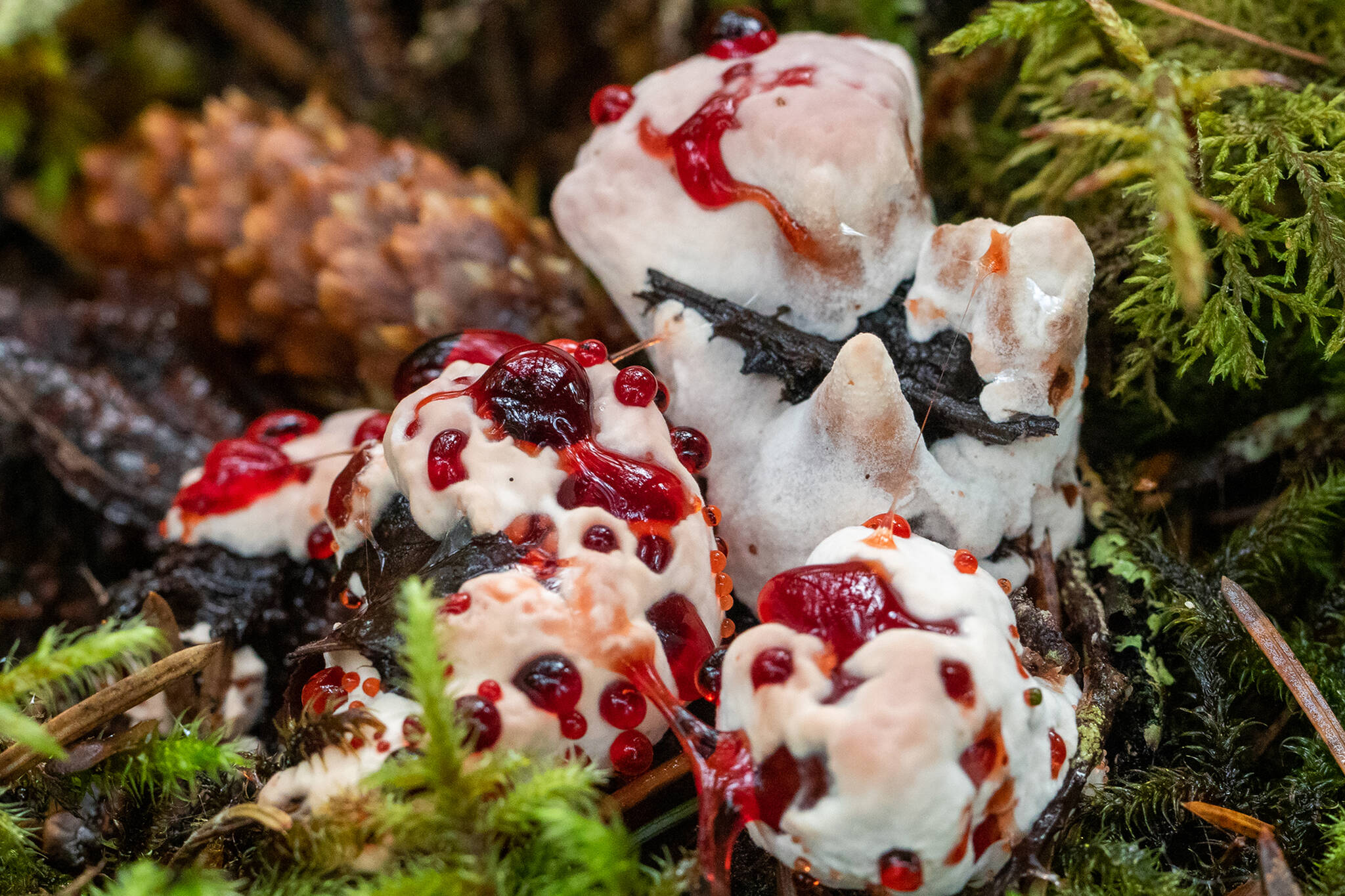By Mary F. Willson
There are probably more than two or three million kinds of fungi, although fewer than about two hundred thousand are known taxonomically. What strange creatures they are: not plants, although their cells have walls, as plants do, and not animals, although, like animals they cannot produce their own food and have to consume other organisms. Fungi are their own evolutionary lineage, in fact a kingdom, which may have diverged from the plant and animal kingdoms a billion years ago.
It would take several books to describe all the weird and wonderful things that fungi do—some are parasites or pathogens, many are decomposers of organic materials, some are mutualists with other organisms, some are cultivated by ants or termites, and certain wasps lay their eggs together with the spores of wood-rotting fungi whose rotting activity makes the wood edible for wasp larvae, and on and on. Some fungi can withstand intense ultraviolet and cosmic radiation, some can live in the deep-sea hydrothermal vents, some can grow on alcohol or petroleum products. Some are bioluminescent…
So fungi are intellectually captivating in many ways, but this essay is not about to fill a book-shelf. Let’s settle down to some fungi that are captivating in other ways.
For example, take the visually captivating, often colorful bleeding tooth-fungus (Hydnellum peckii, in which the spores are borne on ‘teeth’ under the cap), also known, more appetizingly, as the strawberries and cream fungus. It forms mutualistic mycorrhizal associations with many plants. When young, it just looks like a relatively anonymous mushroom. Later on, however, it commonly develops red, fluid-filled bubbles on the white surface. Lots of mushrooms sometimes have wet droplets on their surfaces—droplets not due to rain or dew or fog but rather to excretion of excess water by the fungus itself. This process is called guttation, and it’s something that plants do too, generally at the edges of leaves. OK, so that may account for the fluid-filled bubbles on this fungus, but why is the fluid red? Is the fungus getting rid of some metabolic by-products too? Or is there some other function?
Still other fungi draw attention because of their captivating feeding habits. It turns out that there are over 200 species of fungi that are carnivorous; they eat animals. This habit is widespread among fungi, having evolved independently in several different lineages. Prey might be amoebae, or springtails, or very commonly, nematodes.
Nematodes or round worms are a common kind of invertebrate living in soil and rotting wood; fungi capture them in a variety of ways. Oyster mushrooms are wood-decomposers, whose filamentous hyphae grow through the rotting wood (occasionally producing the spore-bearing reproductive mushroom outside the wood). Simple contact with the hyphae of these mushrooms is reportedly sufficient to paralyze a nematode, thanks to a special toxin, and eventually the worm is reduced to digestible slush by a hypha that penetrated the prey’s body. Others, such as shaggy mane fungi, produce an adhesive knob (or in some cases, special adhesive hyphal branches) that likewise immobilizes a captive prey, which is then digested similarly. Other fungi make loops or rings of hyphal filaments; some rings snap shut around a creeping nematode with rapid mechanical actions, which others are sticky and hold a nematode that way; still others may use both methods of capture. Then a hypha penetrates the captive and digests the insides.
The deviousness of carnivorous fungi knows few bounds: At least some carnivorous fungi actively attract nematodes with scents that mimic food or mating signals. Furthermore, the very presence of a nematode can, in some carnivorous fungi, induce the formation of a trap!
• Mary F. Willson is a retired professor of ecology. “On the Trails” appears every Wednesday in the Juneau Empire.

